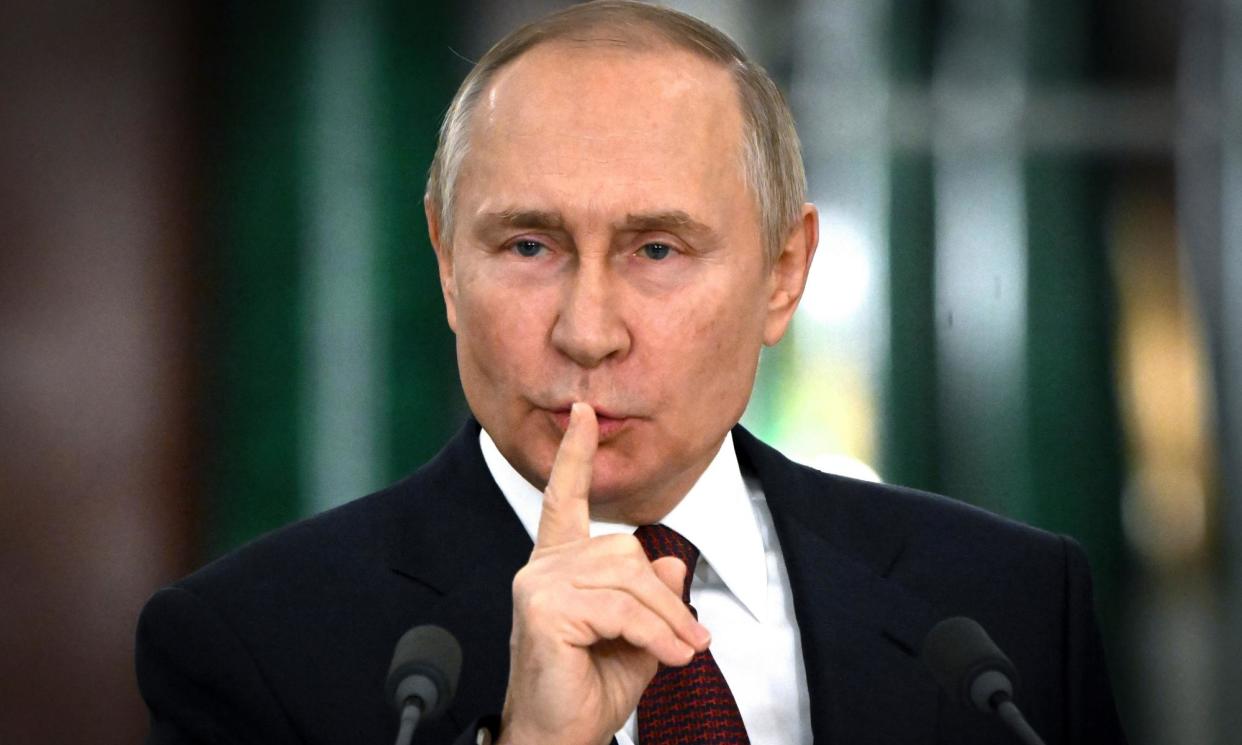Putin still believes he can win in Ukraine, says western assessment

Vladimir Putin remains intent on trying to defeat and dominate Ukraine two years after launching an invasion that has caused more than half a million casualties, western officials said in a fresh assessment of the war.
The Russian president is thought to be notably more optimistic than a year ago, buoyed up by the US’s failure to sign off $60bn more in military aid and limited recent successes on the battlefield, namely capturing the town of Avdiivka.
“We do not believe Russia has given up on its maximalist goals of subjugating Ukraine,” officials said, speaking on condition of anonymity, a day after Putin told his defence minister to continue attacking after the costly victory.
The Russian leader told Sergei Shoigu “to build on” the capture of Avdiivka, which was captured at the weekend after a four-month battle, during which Ukraine’s ammunition ran short after US supplies dried up. Experts estimate that Russia is out-shelling Ukraine by a ratio of five to one across the frontlines.
On one estimate Russia’s military was at times incurring more than 1,000 casualties a day killed and wounded at Avdiivka and elsewhere along the frontline. The typical daily Russian casualty figure is considered closer to 900.
However, Putin is not thought to have any clear-cut medium-term strategy, the officials added. “We do not believe Russia has a meaningful plan beyond continuing to fight in the expectation that Russian manpower and equipment numbers will eventually tell,” they said.
With minimal movement on the battlefield, Putin is almost certainly hoping for the unpredictable Donald Trump to return to the White House, a politician who has at times praised the incumbent of the Kremlin and who, recent reports have suggested, may withhold future aid to Ukraine to force it to negotiate a peace deal.
There are also indications that Russia’s intelligence services have been regrouping, after it emerged that a defector who flew a helicopter into Ukrainian territory had been shot dead in Spain. Although there is no evidence Russia was behind the killing, the belief is that it was very likely to have been state-directed, with any plot most likely to be the work of GRU military intelligence.
Russia attacked Ukraine in the early hours of 24 February 2022, with Putin calling for the “demilitarisation and denazification” of the smaller country, starting the largest war in Europe since 1945. Russia’s initial effort to capture Kyiv failed, but the frontlines have remained relatively static since 2023 despite Ukraine’s early successes.
A previous US intelligence estimate suggested that 315,000 Russian soldiers have been killed or wounded since the start of the war. Western intelligence does not regularly estimate Ukrainian casualties, but last summer one estimate put the figure at 170,000 to 190,000, and the total on both sides at more than half a million.
No active peace talks have been going on behind the scenes and despite the increasingly exhausting conflict it is not clear that either side is willing to trade. Ukraine’s leadership have repeatedly said they want to restore the country’s pre-2014 borders while Russia has said it is opposed to Ukraine joining Nato.
The officials said they believed that “sanctions are hitting the Russian military complex hard”, causing severe delays and other costs to the country’s manufacturing as Moscow scrambles to deal with shortages of western components that were commonplace in its more advanced weaponry.
However, the Kremlin has reoriented Russia towards a war economy, lifting defence spending to 7.5% of GDP, with factories running round the clock and hundreds of thousands of new jobs created despite the western sanctions.
Estonia has estimated that Russia could produce 4.5m shells this year, while Europe has struggled to meet a target of supplying 1m. No ammunition has come from the US since the beginning of January as the Republican-led House has refused to hold a debate on a foreign assistance package that includes $60bn for Ukraine.
Nevertheless, such is the pressure on Russia’s arms industry that the Kremlin is now “requisitioning military equipment originally intended for delivery to foreign partners”, the officials said, in effect reneging on paid-for contracts.
Eleven months ago, India’s air force said that Russia could not honour arms delivery commitments. Western countries have been targeting countries that have been traditionally customers of Russian arms.


